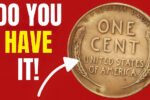Rarest $2 Bills : While most $2 bills in circulation carry just their face value, a handful are true hidden gems—rare varieties that collectors are scrambling to own. In 2025, certain bills have soared in value, sometimes reaching into the thousands of dollars. Here’s what sets them apart.
What Makes a $2 Bill Valuable?
Star Notes & Replacement Bills
Replacement notes, identifiable by a small star (★) in the serial number, are printed in limited quantities, boosting their collector valueSeal Color & Series Year
Red seals (on 1928–1963 notes) denote older, more sought-after issues.
Brown-treasury seals, like those on 1890 notes, are extremely scarce
Unique Serial Numbers
Collectors prize low serials (e.g., 00000001), repeating patterns (ladders like 12345678), palindromes, or “radar” numbersPrinting Errors & Misprints
Bills with misaligned seals, double-printed serials, smears, or shifted ink are rare—and valuableAge & Condition
Older issues (1860s–1920s) in uncirculated (mint) condition see the biggest premiums
Top $2 Bills Worth Thousands in 2025
| Series & Type | Key Features | Value Range (USD) |
|---|---|---|
| 1890 Treasury “Mini‑Porthole” | Brown seal, intricate design | Up to $4,500 in mint condition |
| 1928B Red Seal Star Note | Red seal + ★ replacement | $1,000–$7,500 (circulated to uncirculated) |
| 1869 “Rainbow Note” | Multicolored design, red seal | $500–$2,500+ |
| 1862 Legal Tender Note | Early issue, featuring Hamilton | $300–$2,500+ |
| 1976 Star, Low, or Error Notes | Replacement star, low/ladders, misprints | $100–$2,700+ |
| 1995–2003 Star Notes | Star after serial, limited print run | $20–$500+ |
Real Examples & Recent Sales
A 2003 star note sold for around $2,400 at Heritage Auctions in July 2022—which likely trades for even more now
A 1890 uncirculated Treasury note fetched $4,500, the current benchmark for $2 bills
Minor misprint or “crooked” serial errors from the 1970s have sold for $400–$700
A low serial (“L 00000008”) star note, despite minor condition issues, brought $1,631 at auction
Check the Series & Seal
Look for 1860s–1920s issues (legal tender, silver, treasury notes) with red or brown seals.Serial Number Matters
Scan for stars, low numbers, ladders, palindromes, repeating digits.Signs of Errors
Tilt the bill—notice misaligned seals, doubled serials, smudged ink?Assess Condition
Uncirculated bills (sharp corners, vibrant color) fetch the highest prices.
Preserving & Selling Your Find
Preservation: Store in acid-free sleeves; avoid folding or exposure to moisture/light
Grading & Authentication: Submit to PCGS or PMG for professional verification.
Selling Venues: Heritage, Stack’s Bowers, U.S. Currency Auctions, eBay, niche forums (CoinTalk).
Frequently Asked Questions (FAQs,,)
1. Are all $2 bills rare?
No. Most $2 bills in circulation are common and only worth face value. However, specific issues—based on year, seal color, serial number, and condition—can be rare and highly valuable to collectors.
2. Which $2 bills are the most valuable in 2025?
The most valuable $2 bills typically include:
-
1890 Treasury Notes (Brown Seal)
-
1928B Red Seal Star Notes
-
1862–1869 Legal Tender Notes
-
Low serial number or star replacement notes from 1976
-
Bills with printing errors or unique serial numbers
These can be worth hundreds to thousands of dollars depending on condition and rarity.
3. What is a “Star Note” and why is it special?
A Star Note has a star symbol (*) at the end of its serial number. These are replacement notes printed in small batches when errors occur. Because they’re rarer than regular bills, they are more valuable to collectors.
Yes, most $2 bills = $2—but certain variants in excellent condition can be worth thousands.
The rarest today include 1890 Treasury notes, 1928B red seal star notes, and error/low-serials from the 1970s.
If you stumble upon a $2 bill that seems odd—don’t spend it! First, inspect its seal, series, serial, error features, and condition thoroughly.
Next Steps
Dig through old wallets, drawers, or collections.
Take high-resolution photos of suspect bills and share them on collector forums for preliminary feedback.
Consider having high-potential notes professionally graded before selling.
Your $2 bill could just be the star of 2025’s rare‑currency boom. It only takes one valuable note to turn a small curiosity into a big payday!
Let me know if you’d like help identifying a specific bill or guidance through the grading process!




